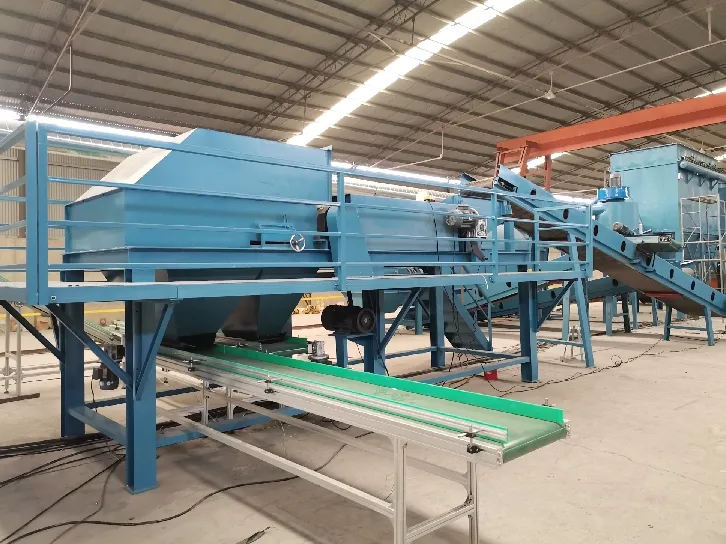

Novemba . 08, 2024 21:37 Back to list
The Importance of Cable Granulation in Recycling and Waste Management
In an age where environmental concerns are at the forefront of global discussions, efficient recycling processes have become crucial. One of the significant aspects of recycling that often goes unnoticed is cable granulation. Cable granulation refers to the process of recovering valuable materials from discarded electrical cables, which typically consist of copper, aluminum, and various plastic materials. This article will delve into the mechanics of cable granulation, its environmental benefits, and its role in the circular economy.
Understanding Cable Granulation
The cable granulation process involves several stages aimed at extracting metals from used cables. Initially, cables are stripped of their outer insulation layer to expose the metal core. This is often done manually or using mechanical strippers. Once stripped, the cables are shredded into small pieces, typically the size of grains, which is where the term 'granulation' comes from. After shredding, the mixture of metals and plastics undergoes separation using various methods, such as magnetic separators for ferrous metals and air classifiers or water separation techniques for non-ferrous metals and plastics.
This refined process ensures that valuable materials are recovered efficiently, minimizing waste and promoting resource conservation. For instance, copper, a highly conductive metal used extensively in electrical applications, is not only expensive but also has significant environmental impacts when extracted from raw ore. Therefore, recycling copper from old cables offsets the need for new mining operations, which can be energy-intensive and environmentally damaging.
Environmental Benefits
The environmental benefits of cable granulation extend far beyond the mere recovery of metals. One of the most significant impacts is the reduction in landfill waste. Electronic waste (e-waste), including old cables, is a growing problem worldwide, as it contains hazardous substances that can leach into soil and water sources. By engaging in cable granulation, we divert these materials from landfills and recycle them, thus conserving natural resources and reducing environmental pollution.

Additionally, recycling metals through granulation consumes less energy compared to the extraction and processing of new materials. For example, recycling copper saves approximately 85% of the energy that would be required to mine and refine new copper from ore. This demonstrates how cable granulation not only benefits the economy by providing affordable raw materials but also contributes significantly to reducing carbon emissions associated with mining and manufacturing processes.
Role in the Circular Economy
Cable granulation is a vital component of the circular economy, which aims to create a closed-loop system in which waste is minimized, and resources are reused and recycled. By harnessing the potential of cable granulation, manufacturers can source high-quality recycled materials, fostering sustainability and resilience within their supply chains.
Moreover, as global demand for electronics continues to rise, the need for responsible recycling practices becomes even more pressing. The cable granulation industry is stepping up by developing advanced technologies and systems that streamline the recycling process, making it more efficient and effective. This not only helps in meeting regulatory requirements but also aligns with consumers' growing expectations for eco-friendly practices.
Conclusion
In conclusion, cable granulation plays a crucial role in the recycling and waste management landscape. By recovering valuable materials from obsolete cables, this process significantly contributes to reducing landfill waste, conserving natural resources, and lowering energy consumption. As we move toward a more sustainable future, embracing cable granulation and similar recycling practices will be essential in fostering a circular economy that prioritizes environmental health and resource efficiency. Investing in cable granulation technology and infrastructure is not just an opportunity; it is an imperative for creating a greener planet.
Latest news
Troubleshooting Common Eddy Separator Problems
NewsJul.04,2025
The Role of Metal Recycling Plants in Circular Economy
NewsJul.04,2025
The Impact of Recycling Line Pickers on Waste Management Costs
NewsJul.04,2025
Safety Features Every Metal Shredder Should Have
NewsJul.04,2025
How Industrial Shredders Improve Waste Management Systems
NewsJul.04,2025
How Cable Granulators Contribute to Sustainable Recycling
NewsJul.04,2025